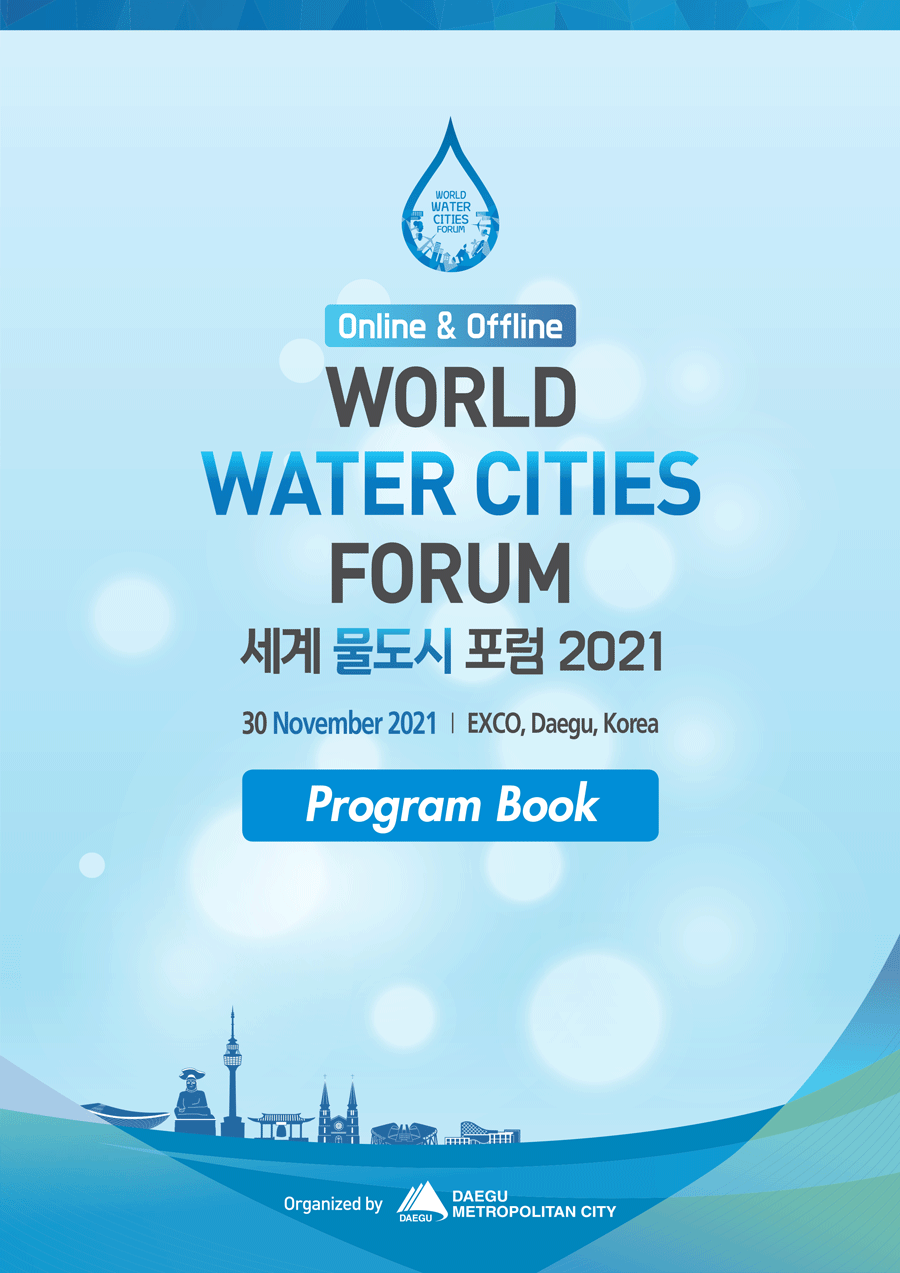Past WWCF
2021
Past WWCF 2021
Overview
- Date
- 30 November – 1 December 2021
- Venue
- Room 325, 324B, EXCO, Daegu, Republic of Korea
- Theme
- Water Cities’ Cooperation and Innovation
- Host
- Daegu Metropolitan City
- Participants
- Government officials, Water Specialists and Academics from 11 Cities in 10 Countries and 3 Organizations
- Program
-
- Keynote SpeechⅠ “The Future of Water : Opportunities and Risks ”
- Keynote SpeechⅡ “Bridging collaboration and innovation through networks and initiatives for sustainable and inclusive cities”
- Session 1 Presentation and Discussion on Mikkeli’s Water Challenge
- Session 2 Presentation and Discussion on Shaoxing’s Water Challenge
Overview
| Date | Nov. 30(Tue) - Dec. 1(Wed), 2021 |
|---|---|
| Venue | #325, #324B, EXCO, Daegu, Republic of Korea |
| Host | Daegu Metropolitan City |
| Invited Cities / Organizations | 11 Cities in 10 Countries and 3 Organizations Daegu(Korea), Bangkok(Thailand), Bogota(Colombia), Jhelum(Pakistan), Kumamoto(Japan), Leeuwarden(Netherlands), Mikkeli(Finland), Montpellier(France), Orange County(USA), Shaoxing(China), Yixing(China), UNESCO, World Water Council, International Water Resources Association |
| Participants | Government Officials, Water Specialists and Academics |
Program Timetable
| Time | Program |
|---|---|
| 16:00~ 16:10 (10’) | Opening |
| Introducing Attendee | |
| Opening Remarks (Mayor of Daegu Metropolitan City) | |
| 16:10~16:40(30‘) | Keynote SpeechⅠ “The Future of Water : Opportunities and Risks ”(Mr. Loïc Fauchon, President of World Water Council) Keynote SpeechⅡ “Bridging collaboration and innovation through networks and initiatives for sustainable and inclusive cities”(Mr. Gabriel Eckstein, President of International Water Resources Association) |
| 16:40~16:50(10‘) | MOU signing (Daegu – Mikkeli) |
| 16:50~17:00(10‘) | Winning speech from Daegu challenge winning team (Next Generation Water Action at DTU) |
| Feedback from selected water challenge cities WWCF 2020 (MWA, Bangkok) | |
| <Session 1> Presentation and Discussion on Mikkeli’s Water Challenge | |
| 17:15~18:05 (50’) | Presentation of Water Challenge I Mikkeli Educating and recruiting young professionals in the water sector" |
| Solutions to the Water Challenge I① Orange County ② Bangkok ③ Kumamoto ④ Yixing ➄ Daegu | |
| Panel Discussion Discussion on solutions and implementation plans. Vote for top 1 solution | |
| <Session 2> Presentation and Discussion on Shaoxing’s Water Challenge | |
| 18:15~18:58 (43‘) | Presentation of Water Challenge IIShaoxing “Seeking comprehensive and innovative strategies for the management and restoration of plain river ecology“ |
| Solutions to the Water Challenge II① Bogota ② Unesco ③ Jhelum ④ Montpellier | |
| Panel DiscussionDiscussion on solutions and implementation plans. Vote for top 1 solution | |
| 18:58~19:00 (2’) | Closing |
Suggested Water Challenges 2021

 1
1 

Introduction of participants in WWCF 2021
Bangkok - Thailand
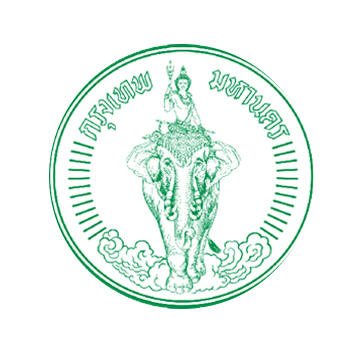
About the City/Organization
| Name | Bangkok |
|---|---|
| Total Land Area (km2) | 1,569 |
| Population | 8.281 million |
About the Organization
| Name | Metropolitan Waterworks Authority |
|---|---|
| Established | August 16, 1967 |
| Type | Water Supply |
| Headquarters | Bangkok |
| Membership | IWA, AWC, AWWA |
Introduction of the City/Province/Organization
In the last century, there were only about 330,000 people in Bangkok. There are many canals constructed to connect with the Chao Phraya River. Bangkok residents consume canal water and rain water in their daily lives.
IHowever, in dry season, canal water became unsafe and occasionally caused an outbreak of fatal cholera. According to King Rama V’s awareness of water condition, the water supply project was initiated in 1909 in order to provide clean water for the residents. Survey, design and construction of raw water canal were launched in the 5 following years. Consequently, treated water from Bangkok Waterworks was first distributed to the residents in 1914.
IIn 1967, the Bangkok Waterworks was changed to Metropolitan Waterworks Authority (MWA), a state enterprise under the Ministry of Interior, which is responsible for water production, transmission and distribution to people living in 3 adjoining provinces, namely, Bangkok, Nonthaburi and Samut Prakan.
Bogotá - Colombia

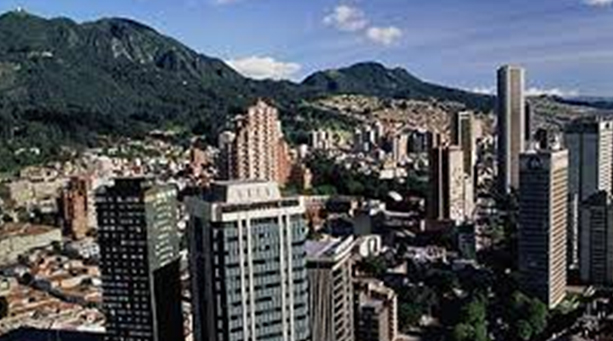
About the City/Organization
| Name | Bogotá D.C |
|---|---|
| Total Land Area (km2) | 178.000 hectares |
| Population | 8 million |
About the Organization
| Name | Secretary of Habitat |
|---|---|
| Established | November 2006 |
| Type | Public |
| Headquarters | Calle 52 No.13-64 |
| Membership | none |
Introduction of the City/Province/Organization
Bogotá is the capital city of Colombia, it lies at 2600 meters altitude on a mountain plateau in the eastern mountains of the Andes. The city is divided in 20 boroughs and 75% of the land is rural. While Bogota lies almost on the equator is the average daily temperature by the high altitude of only 18 degrees, dropping to 9 degrees at night).
The city was founded back in 1538 by Gonzalo Jimenez de Quesada, and was part of the Spanish colonial cities. After the liberation treaty, the city grew slowly, but as of 1940 has since attracted many Colombians from the country to the city in search of greater economic prosperity. Bogota is the most important center of Colombia, both politically and financially and culturally. Bogota is a modern, growing metropolis with high-rise buildings in the center, surrounded by suburbs with mostly low-rise.
Bogota is connected through the Eldorado airport and the Pan-American Highway to other major centers. Although the city has a vast network of roads one of the major problems is traffic congestion. Bogota therefore applies a restrictive car policy. The current public transport, taxis and buses will be complemented in the near future with a metro system.
The street pattern of the city is like a rectangular network: the streets of north-south direction are called carreras, perpendicular to the streets in an east-west direction called calles. Carreras and calles generally have no name, but a number. The house numbering is based upon it.
Bogotá is the home of the nation’s tire, chemical, and pharmaceutical industries, but its chief activities are commercial. A stock exchange (1928) and the main banks are located in the city. It is the hub of air travel in Colombia and the home of Avianca (Aerovías Nacionales de Colombia), the first commercial airline in South America. Railroads connect Bogotá with the Caribbean coast to the north and via Puerto Berrío with the Pacific coast to the west. Bogotá is on the Colombian section of the Pan-American and Simón Bolívar highways and has road connections with all major Colombian cities.Jhelum - Pakistan
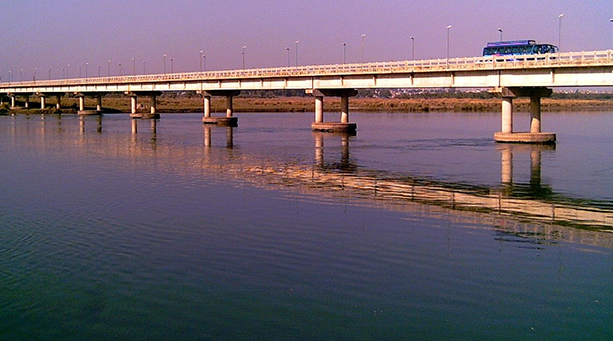
About the City/Organization
| Name | Jhelum |
|---|---|
| Population | 1.2 million |
| Main industry/ Economic sectors |
Mining, Tobacco, Tourism |
| Source of water supply | Springs, Tubewell |
Introduction of the City
Description
Being at the foothills of the Salt range, most of groundwater in district Jhelum is saline. The drinking water to the local community is being provided through installation of tube wells at the bank of River Jhelum and small springs originating from the Salt range. There is acute shortage of drinking water in the area. The area lying between river Jhelum and Salt range is comprised of virgin land. The groundwater and discharge brought by hill torrents are saline, therefore irrigation is being practiced just on edge of river Jhelum, whilst remaining area of about 160,000 acres is deprived of any irrigation supply. Therefore, farmers are mainly practicing rainfed agriculture.
The water quality in district Jhelum is facing severe challenges due to untreated disposal of domestic wastewater. In most of the tehsils of district Jhelum wastewater is flowing openly or in open small drains which are not connected to any main drain. As a result, proper sewerage collection system is not in place. Moreover, solid waste like plastic bags blocks the sewer lines.
The wastewater without any treatment is either used for irrigation or dumped into the local ponds or into Jhelum river. The wastewater discharges from human activities in various tehsils of Jhelum has not only caused fouling, problems for pedestrian’s movements but also resulted in waterborne and vector-based diseases.
The wastewater mixing in surface water and seepage into the groundwater is also deteriorating the water quality in various areas due to higher load of microbial and nitrate contamination. If the untreated municipal waste is allowed to be continuously dumped into soil and water bodies specifically the river Jhelum; this may result into serious public health and ecological threats in the near future.
Scale
Pakistan Council of Research in Water Resources (PCRWR) conducted a detailed study on groundwater assessment and quality of the area. The study shows that fresh water supply is scarce and vulnerable in terms of its availability, quantity and quality. There is only a shallow and small fresh groundwater pocket existing near Jalalpur village, whereas the groundwater of the remaining tehsil is highly saline and unacceptable for drinking.
PCRWR also conducted a detailed investigation during 2019-20 to elucidate the wastewater impacts and treatments needs analysis in the district. Accordingly, Pind Dadan Khan, Sohawa and Dina tehsils of Jhelum district have shown a grave situation with respect to wastewater pollution and lack of sewerage collection and treatment system.
Key specs
The water and wastewater treatment is important before the health and hygiene of the people living in these areas suffer further. To achieve the SDG 6 Target 6.3, at least 50% of the produced wastewater needs to be treated by 2030. Thus, the approach of recycling, reduce and reuse of wastewater should be introduced for safe and environmentally sustainable way of wastewater utilization.
1. Optimization of existing sewerage and drainage system: Proper sewerage and drainage system including sewage collection should be placed in all the urban and rural areas of district Jhelum.
2. Installation of wastewater treatment systems: The wastewater treatment using appropriate site specific treatment methods such as constructed wetlands using bioremediation, bio-cleaner, sewage treatment plant etc. should be introduced with defined modalities for sustainable operation.
3. Capacity Building: To help the local communities to have access to safe water quality, the capacity of Public Health Engineering Department, Tehsil Municipal administration and village water committees/associations should be enhanced for disinfection of drinking water sources and water storage bodies as well as regular water quality monitoring.
Additional info
If needed detailed technical reports of Jhelum city may be downloaded from the webpage of Pakistan Council of Research in Water Resources (www.pcrwr.gov.pk)
Kumamoto - Japan

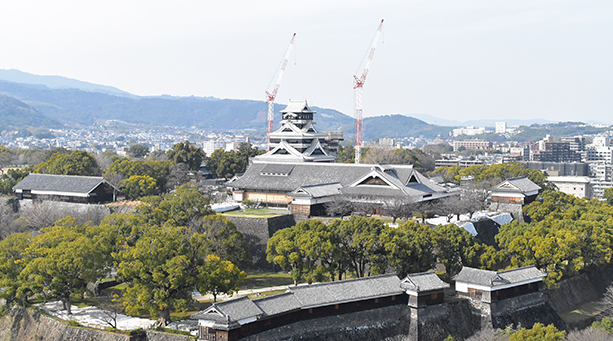
About the City
| Name | Kumamoto City |
|---|---|
| Population | 740,000 |
| Main Industry/ Economy Sectors |
Service Industry, Agricultural Industry |
| Source of Water Supply | Ground water |
| Website | www.city.kumamoto.jp |
Introduction of the City
Kumamoto City is located in the centre of the island in the southwestern part of the Japanese archipelago called, "Kyushu." We have a glorious view of Mt Aso to the east of the city, and to the west, the city faces the Ariake sea.
Kumamoto City is blessed with rich groundwater, and all the drinking water for our population of 740,000 is supplied with this natural spring water. It is a rare and unique case among Japanese cities with more than 500,000 residents that we are able to cover all of our water supply needs with groundwater. As such, Kumamoto City has been named ‘the Number One Groundwater City’ in Japan.
Kumamoto is also a gourmet city with abundant good-quality food such as fruits, vegetables, beef and seafood thanks to the rich nature.
Water Challenges in Kumamoto
Description
All of the water resources used by Kumamoto City’s 740,000 citizens are entirely supplied by groundwater. For this reason, we have d partnerships with the prefectural government and our 11 neighboring municipalities, as well as with businesses and citizens in the region, to undertake various groundwater conservation efforts. Moving forward, it is imperative that we work together to sustainably preserve our groundwater’s quality and its water reserves.
Scale
In terms of population, the region has about one million residents, and, in terms of governing bodies, we are in collaboration with our eleven neighboring municipalities and the encompassing Kumamoto prefectural government, all of whom share our water supply.
Key specs
Many of our neighboring municipalities are undergoing urbanization, and, as a result, the amount of land that can be used to recharge our groundwater supply is decreasing. For this reason, we are currently developing projects to artificially recharge groundwater through rice field inundation projects in Kumamoto and other municipalities.
Additional info
We hope to share more information about the 4th Asia-Pacific Water Summit to be held on October 19th and 20th where we will bring together leaders from 49 countries to discuss water issues. We hope this event will further contribute to finding solutions with regard to numerous water issues across the region.
Leeuwarden - Netherlands
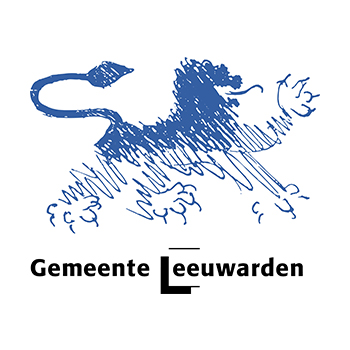
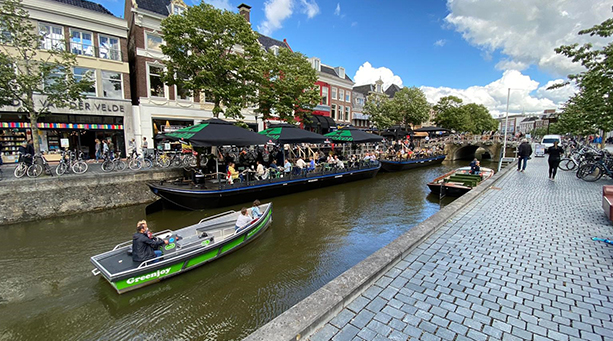
About the City
| Name | Leeuwarden |
|---|---|
| Population | 123,000 |
| Main industry/ Economic sectors |
Agro Foods; Services; Tourism, Water Technology |
| Source of water supply | Ground water |
| Website | www.leewarden.nl www.watercampus.nl |
Introduction of the City
Our city is working on the water topic for more than a decade. WaterCampus Leeuwarden is one of the outcomes of this process. Our mission is to contribute to solving both regional, national and global water issues.
WaterCampus Leeuwarden is the meeting point of the Dutch water technology sector and has the ambition to play a connecting role for this sector for the rest of Europe as well. WaterCampus encourages cooperation between (inter)national companies, educational institutes and governments within the water technology sector, in order to create synergy for world class innovation, education and entrepreneurship. This strengthens the global position of the European water technology sector. WaterCampus also offers a unique research infrastructure, and is a meeting point for scientists and companies from all over Europe.
The international cooperation organized and encouraged by WaterCampus Leeuwarden leads to knowledge, talent and entrepreneurship that contribute to solutions for global water problems.
Water Campus Leeuwarden is formed by:
- The three managing partners: Wetsus, CEW and Water Alliance;
- The partners: City of Leeuwarden, Province of Friesland, Centre for Innovative Expertise Water (CIV) and Water Application Centre (WAC);
- Members: companies and institutions that are connected as a member or partner to the managing partners.
Water Challenges in Leeuwarden – A testbed for world wide water technology innovations
Description
Leeuwarden is located centrally in the province of Friesland, situated in the Northern part of the Netherlands and close to the Wadden Sea. Water is never far away in this delta region. Friesland is known for its lakes and isles.
Main economic sectors:
- Agro Food;
- Servides;
- Tourism;
- Water Technology
Source of water supply:
Groundwater
Main utilities providing water and waste water services:
Vitens and Wetterskip Fryslan
Scale
Inhabitants: 123,000
Total surface : 255,62 km²
- land : 238,38 km²
- water : 17,24 km²
Key specs and challenge
Our city wants to act as a testbed for water technology innovations that can create impact for the long term sustainability goals. Our challenge is to solve global water challenges with local solutions. We invite entrepreneurs, science and other cities to cooperate with us.
We would like to showcase three action lines in our city during the World Water Cities Forum 2020:
1. Wastewater Treatment Plant (WWTP) as a resource and energy factory;
2. Smart and efficient drinking water solutions in the built environment;
3. Smart pipeline inspection in our sewerage and smart asset management.
1. At our WWTP we have a plug and play opportunity for testing new water technology, called demo site. You can bring your container and test your technology in a real life setting with real waste water streams. At the site everything is available. Energy, lab facilities etc. Currently new technologies for bioplastics production, phosphate recovery and recovery of cellulose are being tested.
2. In houses and offices in Leeuwarden and our province new technologies en innovative solutions are tested in a real life situation. For Example a game to create awareness and to stimulate activities to save water, an award winning technology to recycle water in an innovative way at the source in house and a decentral system for waste water treatment.
3. In our sewerage system a robot technology is tested to do pipeline inspection. By doing this inspection pipeline failures are prevented and there is up-to date decision information available for asset management and pipeline maintenance.
WaterCampus Leeuwarden
Our region is working on the water topic for more than a decade. WaterCampus Leeuwarden is one of the outcomes of this process. Our mission is to contribute to solving both regional, national and global water issues.
WaterCampus Leeuwarden is the meeting point of the Dutch water technology sector and has the ambition to play a connecting role for this sector for the rest of Europe as well. WaterCampus encourages cooperation between (inter)national companies, educational institutes and governments within the water technology sector, in order to create synergy for world class innovation, education and entrepreneurship. This strengthens the global position of the European water technology sector. WaterCampus also offers a unique research infrastructure, and is a meeting point for scientists and companies from all over Europe.
The international cooperation organized and encouraged by WaterCampus Leeuwarden leads to knowledge, talent and entrepreneurship that contribute to solutions for global water problems.
WaterCampus Leeuwarden is formed by:
Keyambition/challenge:
Leeuwarden acts as a testbed for world wide water technology innovations.
Additional info
https://www.watercampus.nl/ https://wateralliance.nl/en/
Mikkeli – Finland
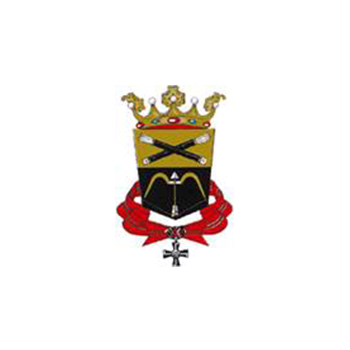
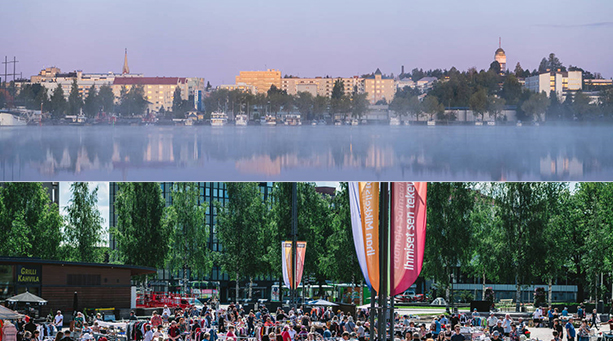
About the City
| Name | City of Mikkeli |
|---|---|
| Population | 55,000 |
| Main industry/ Economic sectors |
Hospital supplies, energy solutions, solar energy, plywood industry, food |
| Source of water supply | Ground water |
| Website | www.mikkeli.fi |
Introduction of the City
City of Mikkeli is located southern Savo, in Finland, Nordic Europe. The strengths of city include clean water, forests and healthy food. We are well study and trained population, technology-oriented, well-known and close to pure nature. Postgraduate studies will have excellent market value, thanks for University of Applied Sciences and the University Center. The university unit focusing on water expertise. Mikkeli is located on pure groundwater. We pump our drinking water directly under the city market. Good quality water is important for individual families and especially for the food industry. All our water used is recovered and gray water is not release directly to nature. Our new gray water treatment plant with new membrane bio reactor will be ready 2021. EcoSairila Business Park, around of gray water treatment plant, will allows research, studying, business and rotation economics in all its forms. Other examples of business in Mikkeli are renewable energy, circulation economy, zero energy homes, wood construction, care for the elderly population.
Water Challenges in Mikkeli – Urban runoffs and effluents to the drainage basin / Educating and recruiting young water professionals
Description
Mikkeli is located in eastern Finland, South Savo region by the Lake Saimaa. Mikkeli has a population of 53,781 and covers an area of 3,229.57 km2 of which 424.7 km2 is water. The population density is 31.64 inhabitants per km2.
Challenge: Urban runoffs and effluents to the drainage basin
Lake Saimaa is the largest lake in Finland, and the fourth largest natural freshwater lake in Europe. Saimaa is spotted with islands, and narrow canals divide the lake in numerous small, extremely fragile parts.
City of Mikkeli industrialized in 1920s and saw mills and other industries sprung by the Lake Saimaa. Also the population increased rapidly. Coming to 1960s when WTT plant started operating, the water quality and state of the natural environment were compromised. Since 1960s the water quality and the state of the natural environments has slowly, but continuously improved. Commissioning the new MBR WWT plant in 2021 reinforces this trend. Still City of Mikkeli, built environment and human activities, urban runoffs and effluents to the drainage basin cause a significant threat to effect delicate Lake Saimaa. Main challenges eutrophication and algae blooming during summer.
Challenge: Aging personnel in water sector. Educating and recruiting young professionals
Water and sanitation infrastructure in Finland was built in 1960s and 1970s. In Mikkeli water supply infrastructure is up to date and a new MBR WWT plant is being constructed and commissioned in 2021. Rest of municipalities in South Savo Region are facing the must do investments in upcoming years. The technology leap sets a huge challenge in aspect of human resources, educated personnel. Not only infrastructure but also personnel working in the water sector is aging. Young professionals are fairly scarce and the difficult to recruit.
Scale
Mikkeli is located in eastern Finland, South Savo region by the Lake Saimaa. Mikkeli has a population of 53,781 and covers an area of 3,229.57 km2 of which 424.7 km2 is water. The population density is 31.64 inhabitants per km2.
Key specs
New MBR WWT plant being constructed under bedrock. Commissioned 2021. Includes water reclamation plant, R&D- and testing- & piloting-facilities. Strong R&D activities. Concept being developed: WWTP as resource factory.
Additional info
jouni.riihela@mikkeli.fi
Montpellier Méditerranée Métropole - France

About the City/Organization
| Name | Montpellier Méditerranée Métropole |
|---|---|
| Population | 458 000 (2015) with an urban area of 1 000 000 |
| Main industry/ economic sectors |
Innovation, Health, Numeric, Agroecology, Wine and Tourism |
| Source of water supply | The main drinking water resource comes from a strategic karst aquifer sources (for more than half of the inhabitants), complete by two drillings and is supplemented by a resource exogenous to the territory (the water of the Bas-Rhône which requires more treatment). |
| Website | www.montpellier3m.fr/ |
Introduction of the City/Organization (focusing on water-related issues)
Montpellier Metropole, lies between the Mediterranean Sea and the Cevennes foothills. Its geology is typical of the Mediterranean regions, ranging from karst reliefs to an alluvial plain, bordered by a barrier beach. The territory is crossed by two coastal rivers. The coastline, once swampy, is dotted with ponds. The climate is marked by an alternation of drought and Cevennes episodes, causing floods. The central and coastal part is now largely urbanized and the aquatic environments have been largely artificialized.
In a context of climate change, the metropolis must take up 5 challenges:
- Restore degraded environments
- Save and share water resources equitably,
- Protect aquatic resources and environments in good condition,
- develop solutions based on nature and limit soil artificialization
- develop a memory and culture of water
Orange County (MWDOC) - USA
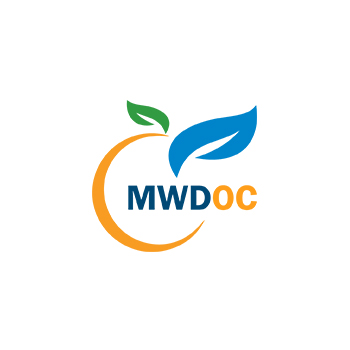
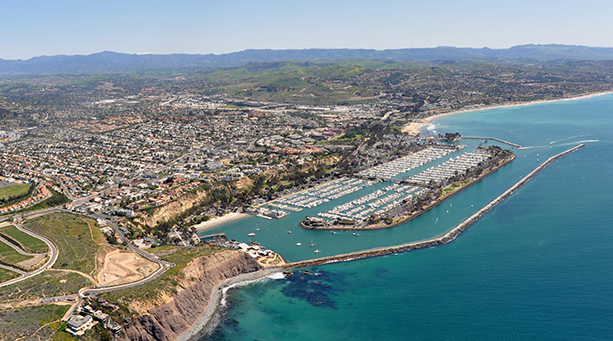
About the Organization
| Name | Municipal Water District of Orange County |
|---|---|
| Population | 2.3 million |
| Main Industry/ Economy Sectors |
Residential, Commercial, Industrial (light manufacturing) |
| Source of Water Supply | Imported Water from Sierra Nevada Mountains (State Water Project) and Rocky Mountains (Colorade River Aqueduct) |
| Website | www.mwdoc.com |
Introduction of the City
The Municipal Water District of Orange County (MWDOC) is a wholesale water supplier and resource planning agency whose efforts focus on sound planning and appropriate investments in water supply development, water use efficiency, public information, legislative advocacy, water education and emergency preparedness.
Established in 1951, MWDOC now serves over 2.3 million Orange County residents through 28 retail water agencies. MWDOC’s service area covers all of Orange County with the exception of the cities of Anaheim, Fullerton and Santa Ana.
Water Challenges in Orange County – Developing a Resilient, Reliable, and Affordable Water Supply
Description
The Municipal Water District of Orange County (MWDOC) is a wholesale water supplier and resource planning agency whose efforts focus on sound planning and appropriate investments in water supply development, water use efficiency, public information, legislative advocacy, water education and emergency preparedness.
Established in 1951, MWDOC now serves over 3.2 million Orange County residents through 28 retail water agencies. MWDOC’s service area covers all of Orange County with the exception of the cities of Anaheim, Fullerton and Santa Ana.
Scale
3.2 million
Key Specs
Local water supplies meet roughly half of Orange County’s total water demand. To meet the remaining demand, The Municipal Water District of Orange County (MWDOC) purchases approximately 70.2 billion gallons of imported water per year ? from northern California and the Colorado River ? through the Metropolitan Water District of Southern California (Metropolitan). MWDOC delivers this water to its 28 member agencies, who in turn, provide retail water services to the public.
Water Supply Development
MWDOC is committed to providing a reliable supply of high quality water for Orange County now, and long into the future. Working closely with Metropolitan and our 28 member agencies, MWDOC studies and evaluates opportunities to improve Orange County’s water supply resources and overall system reliability. Understanding local planning challenges and developing regional stakeholder partnerships, MWDOC works to expand Orange County’s water supply portfolio by providing planning assistance and local resource development in the areas of recycled water, groundwater recharge, ocean water desalination and conservation.
Orange County is in a semi-arid desert climate, and we average just over 12 inches a year of rain. With that being said, we do not have sufficient water supplies to meet the needs of our residents and businesses, which requires us to find alternative water supplies. In addition, Orange County itself serves a very diverse and large region, so the north half of the county has much more reliable local supplies (due to the groundwater basin managed by Orange County Water District). On the other hand, the southern part of Orange County does not have the geographical benefits of a bowl shaped aquifer (South Orange County sits over an underground creek that flows into the ocean), so the southern part of Orange County has far more water supply and water reliability challenges from that perspective (currently, north county is about 50-70% dependent on local supply, whereas south county is 80-100% dependent on imported water supply). Additionally, our imported water supply is heavily dependent on annual precipitation (stored in the snowpack), and with changing climate trends, we have been seeing more and more variability in the availability of our imported water supply. Therefore, we are making many investments to diversify our water supply, both locally and statewide.
Securing a resilient, reliable, and affordable water supply is our highest priority, and many of our other programs (listed below) were developed as a way to support our primary goal of securing a sustainable water supply for our community,
Water Use Efficiency
MWDOC has d award-winning programs that target all water users. Through an innovative, multi-agency approach, MWDOC develops, implements, and evaluates water use efficiency programs that provide multiple benefits. Programs include educational classes, performance reporting, water use surveys and consumer incentives for water-efficient devices. Through the development, implementation and evaluation of these programs, Orange County saves more than 17.1 billion gallons of water each year.
Orange County has long been a leader in promoting water use efficiency, and we have been deeply involved with the creation of new state regulations; however, we have a long way to go, as we still have significant opportunities to increase water use efficiency outdoors. We are also facing challenges with unintended consequences of too much indoor conservation, by means of increased collection system maintenance and issues with odor control, higher strength wastewater, less recycled water, and more. Also, homes are still being built with plumbing standards that do not account for the lower flows and higher solids concentrations, so we are starting to see more issues at the residential level, as well.
MWDOC also provides guidance on water audits for our retail agencies, and we recently launched a regional leak detection program. Currently, we are developing a pilot program to evaluate indoor water use practices and collect data at a more granular level than previous efforts.
Emergency Preparedness
The Water Emergency Response Organization of Orange County (WEROC), which is administered by MWDOC, provides mutual aid planning assistance, and effectively trains member agency volunteers throughout the year, to coordinate and deliver skillful emergency response for all Orange County water and wastewater agencies.
WEROC works closely with the County of Orange, the Orange County Fire Authority, the California Department of Public Health and other entities to ensure a thorough and well-coordinated emergency response in the event of a disaster.
Public Information and Outreach
MWDOC is steadfast in its mission to keep Orange County involved and up-to-date on current water news, water-saving opportunities and pending policy matters through its award-winning public information and outreach programs. Every year MWDOC hosts regularly scheduled Water Policy Symposiums, Elected Officials Forums, educational tours, and co-sponsors the annual O.C. Water Summit in order to engage and educate elected officials, community and business leaders, water industry professionals and the general public about water issues affecting Orange County and beyond. Additionally, MWDOC produces public service announcements and educational collateral pieces including videos, presentations, and briefing papers to ensure our stakeholders are equipped and well versed on issues facing the water industry. MWDOC further engages the public by participating in community events, having an active speakers bureau, and a robust award-winning social media presence.
School Program
Educating the water leaders of tomorrow since 1973, MWDOC’s School Program offers one of the most well-recognized water-education curriculums in southern California. Today, working with the Discovery Cube and Inside the Outdoors, MWDOC has provided nearly three million Orange County students with grade-specific lessons that focus on topics like the water cycle, forms of water and water as an environmental resource.
Legislative Advocacy
Through strong leadership and sound representation at Metropolitan, MWDOC works diligently to secure a dependable water future for all Orange County. This includes unwavering advocacy on behalf of the service area on issues such as water resource and infrastructure planning, development of imported water rates and charges, and sponsorship of statewide water policy that supports regional reliability. MWDOC staff and consultants regularly examine pending legislation and provide s to the Board of Directors monthly. Through this process, the Board of Directors regularly take “official positions” on specific legislative proposals and public policy issues based on MWDOC’s adopted Legislative Policy Principles. The MWDOC Board of Directors, management, staff, and consultants monitor and shape state and federal legislation that impacts the water community and the region as a whole, advocating on behalf of Orange County.
Additional Info
www.mwdoc.com"www.mwdoc.com
Shaoxing - China
About the City/Organization
| Name | Shaoxing |
|---|---|
| Total Land Area (km2) | 8279 |
| Population | 5.01 million |
Introduction of the City/Province/Organization
Shaoxing is a municipal city governed by Zhejiang Province of China, lying in the north-central Zhejiang Province and the southern coast of Hangzhou Bay. With a history of more than 2500 years, Shaoxing is a cultural and ecological tourist city with the typical characteristic of the riverside town in Southern China. It is one of the first 24 National Historic and Cultural Cities, the UN Habitat Cities, and it is also the famous city of water, bridges, wine, calligraphy and celebrities. Shaoxing veins 6759 rivers with the total length of 10887 kilometers, and has 3382 lakes with the total water area of 641.6 square kilometers. In ancient China, more than 400 famous poets including Li Bai, Du Fu, Bai Juyi, Meng Haoran have written poems to praise the Kuaiji Mountain and the Jianhu Lake of Shaoxing.
Yixing - China
About the City/Organization
| Total Land Area (km2) | 1996.6 |
|---|---|
| Population | 125.47million(permanent population in 2017) |
About the Organization
| Name | Environmental Science and Technology Industrial Park of Yi Xing in China |
|---|---|
| Established | November, 1992 |
| Type | China National High-Tech Industrial Development Zone |
| Headquarters | Yi Xing |
| Membership | Environment Science and Technology Industrial Park, The Streets of Xin Jie, Town of Gao Cheng |
Introduction of the City/Province/Organization
Yi Xing is located in the south of Jiang Su province. It is known as China pottery capital. It’s also famous for the limestone caves, tea leaves and the bamboos. It is called the hometown of academicians and professors because there are many cultural celebrities. Yi Xing is one of the country-level cities which have the strongest comprehensive strength. Due to the favourable geographic position and the environment, Yi Xing is developing steadily and rapidly these years.
UNESCO
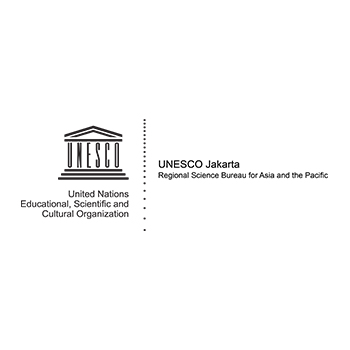
About the Organization
| Name | UNESCO’s Regional Bureau for Sciences in Asia and the Pacific |
|---|---|
| Established | 1951 |
| Type | Regional Bureau of United Nations Specialised Agency |
| Headquarters | UNESCO, Paris (established 1945) |
| Membership | United Nations |
Introduction of the Organization
UNESCO’s Regional Bureau for Sciences in Asia and the Pacific supports UNESCO’s global mandate in the sciences, with particular emphasis on implementing the 2030 Agenda and the Sustainable Development Goals in the region. The office also serves as UNESCO’s representative office to Brunei Darussalam, Indonesia, Malaysia, the Philippines and Timor-Leste.
The UNESCO Office in Jakarta plays a key role in the development, implementation, and coordination of the Intergovernmental Hydrological Programme (IHP) in Asia and the Pacific region. The IHP is the only intergovernmental programme of the United Nations system devoted to water research and management, and related education and capacity development of UNESCO’s member states.
It facilitates an interdisciplinary and integrated approach to watershed and aquifer management, incorporating the social dimension of water, supports international cooperation in hydrological and freshwater sciences and at the interface with policy-makers, and reinforces institutional and individual capacities.
Daegu Metropolitan City - Republic of Korea


About the City/Organization
| Population | 2.5 million |
|---|---|
| Main industry/ economic sectors |
Water, futuristic vehicle, medical, IoT, robot, auto, machinery, metal industries |
| Source of water supply | Nakdong river, Unmun dam, Gachang dam, Gongsan dam |
| Website | www.daegu.go.kr/english/ |
Introduction of the City/Organization (focusing on water-related issues)
As Korea’s water hub, Daegu Metropolitan City fosters water industry through Korea Water Cluster, core infrastructure for innovative water technology development and commercialization. The city forges global water partnership to address global water issues by annually hosting the World Water Cities forum.
As a sustainable and ecological city, Daegu Metropolitan City has implemented the Nakdong River and urban stream restoration project and upgraded water treatment infrastructure from 1983 to 2018 with investment of USD 3.6 billion.
Since the city successfully hosted the World Water forum in 2015, the first national water industry cluster “Korea Water Cluster (KWC)” has been established on 650,000㎡ site in Daegu National Industrial Park with investment of USD 300 million. KWC is equipped with water industry promotion facilities, demonstration facilities and industrial complex. Daegu provides water companies in the KWC with one-stop support ranging from water technology R&D, verification/certification to global market expansion. In order to address global water issues, Daegu has implemented Water Treatment Facility Donation programs for the developing countries in collaboration with 16 KWC’s water companies. In 2017, those companies voluntarily donated water treatment facility to Vinh Long province, Vietnam. The water treatment system enabled 500 households to have access to clean and safe water.
Daegu City has also participated in the government's ODA project to create a Water Treatment Techno Park in Colombia with a total budget of USD 9.3 million, and is seeking to build water-related facilities, nurture manpower, transfer technology and enhance cooperation between Korea and Columbia from 2019 to 2022. In an effort to enhance the global partnership, Daegu is annually hosting the Korea International Water Week (KIWW) and World Water Cities forum (WWCF). In addition, IWRA’s ⅩVII World Water Congress, the largest water resources event, will be held in Daegu, Republic of Korea from May 11 to 15, 2020.
IWRA (International Water Resources Association)
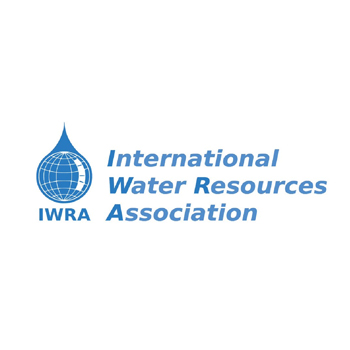
About the Organization
| Name | International Water Resources Association (IWRA) |
|---|---|
| Established | 1971 |
| Type | Non-profit NGO |
| Headquarters | Registered in Wisconsin, USA. Executive office in Paris, France. |
| Membership | 1,021 |
Introduction of the City/Province/Organization
IWRA is a non-profit, non-governmental, educational organisation established in 1971. It provides a global, knowledge based forum for bridging disciplines and geographies by connecting professionals, students, individuals, corporations and institutions who are concerned with the sustainable use of the world’s water resources. The goal of IWRA is to improve and expand the understanding of water issues through education, research and information exchange between countries and across disciplines. IWRA seeks to continually improve water resource decision-making by improving our collective understanding of the physical, ecological, institutional, social, and economic aspects of water. IWRA publishes the academic journal Water International, and organises the World Water Congress. These congresses occur approximaelty every three years in different countries each time, and the 17th Congress will be held in Daegu in May 2020. The World Water Congress has identified and discussed emerging trends and global themes in the water agenda for over 4 decades.
